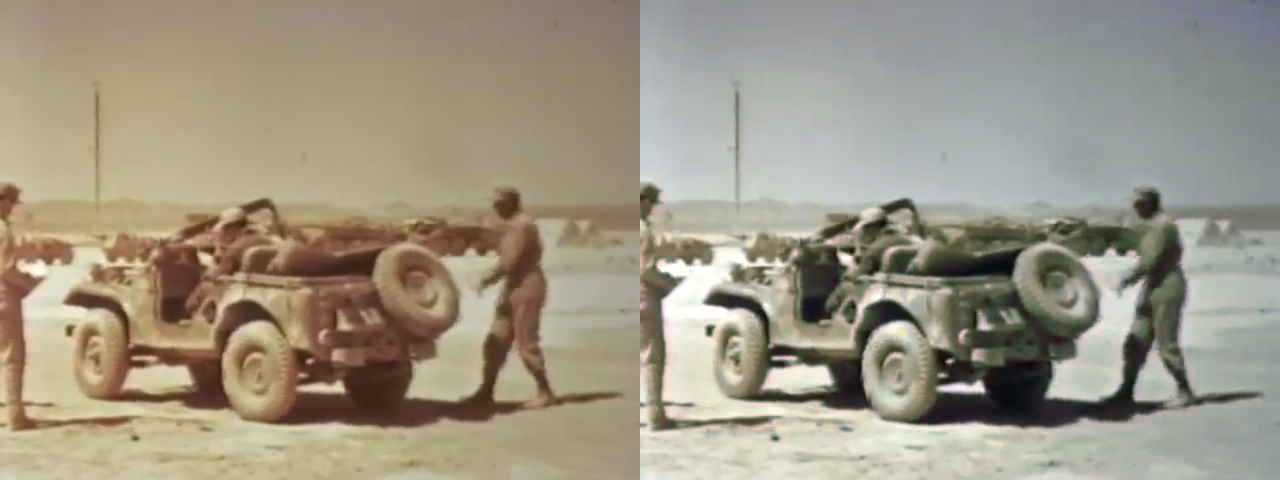 |
Partially enriched (40/60 %) lithium-6/7 inside the fusion capsule of the BRAVO device contributed to a yield 2.5 times the prediction, massively increasing the size of the mushroom cloud to a width that covered the entire atoll. Until the test, it was unknown that lithium 7 bombarded with very high energy neutrons would form extra tritium, the heaviest isotope of hydrogen. Lithium 7 neutron bombardment also creates extra neutrons, further increasing fusion and fission yields. Despite triggering of the bomb from a fission implosion primary, the entire set of stages was surrounded by a uranium jacket that also fissioned in a high flux of energetic 14 MeV (million electron volt mass-energy) neutrons.
 |
| Some of the firing site control team present during the Bravo test. (Left to right) Unidentified, Barney O'Keefe (EG&G), Jack Clark, and Herb Grier (a highly prominent engineer and CEO of EG&G, succeeding Edgerton at the incorporation date). This might have been the data processing room that gave them enough protection from penetrating gamma radiation, until an emergency rescue by 3 helicopters later in the day of the test. O'Keefe designed precision triggering controls for nuclear weapons tests, starting with the Manhatten Project, and later became Chairman of the Board of EG&G. His technical achievements in the Manhatten Project earned him a Commendation of the President, Harry S. Truman. By the 1970s, EG&G became a highly diversified commercial technical electricals, optical instrument/film manufacturer. and government engineering contractor giant, with overall sales in the billions of dollars. This is an impressive growth, considering that it was started by Harold Edgerton and Kenneth Germeshausen in 1931, with Grier Joining in 1934. All were from MIT. Their company was incorporated in 1947. |
 |
| An M52 truck (with its characteristic semi-trailer configuration) delivered a thermonuclear bomb for testing. This was possibly the Bravo device in transport from Parry Island final assembly (shown below) to an LST (Landing Support Tank) ship, for shipment to its firing site. |

Revision is required on bringing details out in the dark areas, yet Kodachrome I film was notorious for its contrast.
The M52 truck (above) emerged from the left side of the final assembly building and circled around. Firing barges were moored at the Parry dock. (LANL)
 |
A Mark 17 weapon casing was drop-tested over the Nevada National Security Site, for performance analysis.
|

Particles and radiation from different locations (corresponding to different events inside the bomb), moved through these pipes, completing their transit before everything was destroyed except for Station 1200.
Bomb radiation and particle diagnostics data were captured in this heavily reinforced instrument 1200 station bunker. (LANL)
These banks of oscilloscopes recorded neutron, x-ray, and gamma radiation directly from the bomb casing, 1.4 mi/2.2 km away, through vacuum pipes.
Station 1200 was entirely engulfed inside a rapidly expanding fireball similar to this from a later REDWING barge test, east of the Bravo site. The Bravo nuclear fireball that reached out to 2.2 mi/3.5 km from the bomb, within 1 second of time. (LANL)
The speckles were debris from the bomb and barge structures, swept out with the fireball's surface. A darker, hem-like pair of lines along the middle were the Y-stem. Y-stems are the combination of incidental and ground reflection waves, magnifying the destructive power.
A prominently brownish-red color strongly generates in large yield weapon fireballs, a property of nitrogen dioxide. Atmospheric nitrogen gas oxidizes in the tremendous heat, moderately eclipsing the overall light emission for a moment, until the outer layer of smog thermally scatters in the extreme temperatures. Therefore large thermonuclear weapons produce two light emission peaks in sequence.
Nitrogen dioxide (NO2) gas in the laboratory. Courtesy of Wikipedia
There is the initial brightest flash. Then it grows darker as the nitrogen dioxide haze increasingly darkens the overall luminosity as the vaporizing bomb fragments expand along the outside of the fireball. NO2 rapidly disperses in the heat, increasing the brightness once again.
EG&G DOMINIC Bluestone Shot
This is a suspected BRAVO fireball sequence, heavily filtered against film emulsion burning and overexposure. (Lookout Mountain Laboratory)

Two Dodge M37 3/4 ton trucks were parked next to the BRAVO shot cab. An update is in progress to improve the sand's color.
Viewing the Bravo aftermath clarifies the extreme speed of the line of sight data capture process, ending in colossal destruction of the region. This crater is 6,500 feet (2,000 m) in diameter and 250 feet (76 m) in depth. (Scene from the highly dramatic, must-see historical film, Trinity and Beyond: The Atomic Bomb Movie

The Romeo EC-17 device was located in the firing barge's white cab. An LCM-3 (Landing Craft Mechanized) was parked in front of it, to the left, and a larger LCT to the right.
Note the milkiness of the water,
caused by the Bravo device's destruction of the area 26 days earlier.
This turbid effect was first observed after the 10.4 MT Mike test at
Enewetak Atoll in 1952, lasting a year.
The Romeo test from 50 miles/80 kilometers away
Courtesy of Wikimapia
Notice the fingerprint to the right-center, as captured from the transcription optical window, when the film was captured from celluloid to Betacam SP broadcast tape during the security screening. This was an official "Oops," courtesy of Uncle Sam:

The Romeo test viewed from Enewetak Atoll, over 250 miles/400 km away.














































